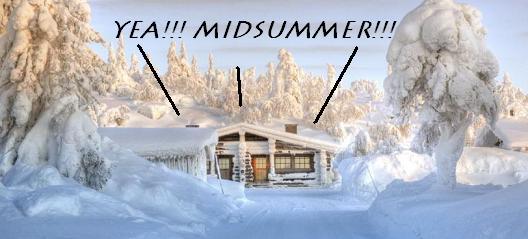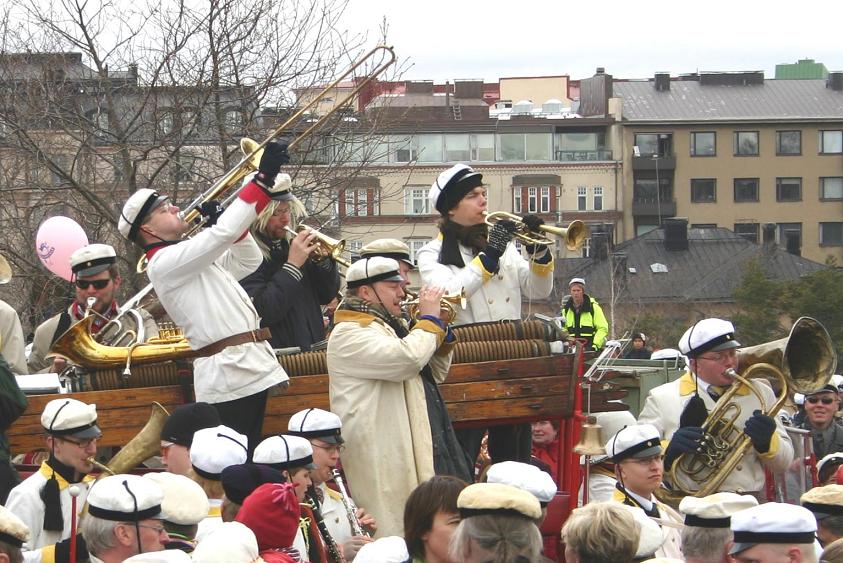It’s been another week without frost. It’s going to be a short winter if this keeps up. Garlic still is stilling in a big pot waiting for the necessary chill coming this weekend, sorta the bookend to maple syrup time in the spring. Going to get 500 in the ground this year… but when? It’s the not knowing that gets you on edge. Too early and they sprout. Too late and they suffer. Yet I checked the photos on Facebook… and last year I planted my garlic another three or four weeks from now. What’s that about?
Enough of that! You are here for the beer. First up, Stan had a great linkfest on Monday and especially made pointed comment on the news in circulation on the fate that hops may face from climate change… aka global warming:
I am all for anything that draws attention to what global warming is doing to the planet, although, quite honestly, there are more and larger disasters looming than the demise of certain hop varieties. Even the ones I love. But I do wish the authors had acknowledged there are more agronomically vigorous cultivars available. And that there are new ones on the way. Now is the time for brewers to consider using them. More of my thoughts in the most recent Hop Queries.
You know I enjoy Hop Queries, probably the best beer newsletter out there. Here’s that update he mentioned. News you can trust. Speaking of which, there was a bit of an interesting slag this week in The Guardian‘s piece on fancy schmancy cider (the type we all like), a bit of a primer that takes a sideswipe in passing:
…they cost more than the vast majority of ciders on the supermarket shelves, although they’re still generally cheaper than natural wines, which they often resemble in packaging and marketing style. In fact, cider is more like wine from the point of view of having a single annual harvest and (pét nats aside) the time it takes to produce a bottle, which is certainly much longer than beer. As a result, producers have generally gone down the artisanal, rather than the craft beer route. They’re also attempting to raise cider’s profile by holding “salons”, or live consumer events, which are a mixture of tastings and talks.
My oh my: “gone down the artisanal, rather than the craft beer route“!!! I love how I don’t exactly know what is meant but, yes, we know what is meant. An actual craft. What craft beer lacks. Perhaps not all that dissimilar is the wine taverns of Vienna, as discussed this week at the Beeb:
Heurigen, the rustic winery-run taverns showing off their aromatic white wines around wooden tables set under grape arbors and laden with traditional Austrian fare that might include schnitzel and blood sausage, always potato salad and ham and a variety of savory cheesy spreads to go with dark sourdough bread. Paris might have its bars du vin, Rome its enotecas. But Vienna’s relationship to wine (and wine-friendly food) is unique. The Austrian capital is the only major European metropolis with a designated wine-growing area within its city limits, counting more than 600 producers on some 1,700 acres of vineyards. “Our city’s long viticultural history goes back to the time of the Celts and the Romans,” explained Ilse Heigerth, my guide in Vienna and a city historian.
I just saw a repeat of a Rick Stein’s Long Weekend shot in Vienna and he corroborated the whole thing. Staying in the centro-Euro, Martin reported on a trip to Belgrade, not a locale high on my list for my wanderings ways – and I am apparently not alone:
These foreign posts don’t get a lot of views because a) No-one else has been there and b) No-one else intends to go there. Oddly, it’s the unsung towns that get the most views. But in the last week I’ve referred to three posts from Ron, Duncan and the European Bar Guide folk and I’m sure if I live long enough my posts on Cuban pubs will be useful to someone, though possibly not the nice American lady we met last week who’s visiting every country in the world (except Cuba, obvs). We did eventually find the more ornate bits of Belgrade, but Mrs RM was more interested in photos of the trams.
Speaking of Ron Pattinson, he’s gone back in time again to the 1970s to the world of romance that was his youth:
As we were guests at the hotel, the pints didn’t need to stop at closing time. When I was young, opportunities for pints after 11 PM were as rare as flamingos in Leeds. I never passed them up. Which is a problem when you’ve paced yourself to end at “normal” closing time. I wasn’t feeling great when I rose after far too few hours’ sleep. But I wasn’t going to let that stop me eating the full English that I’d paid for. On the way back to Newark, we stopped at a Kimberley pub for a few pints. I was a bit overenthusiastic, as I rarely got to drink their beer. I was already feeling a bit unwell when we picked up the hitchhiker. About 10 minutes later I really needed to spew. Being considerate, I pushed past the hitcher, opened the rear door and puked on the road. What a hero I was.
Gary – perhaps more properly – neatly added to a space that is too often left alone, temperance drinking prior to US prohibition. Three posts were added to the whole this week on the topic of a church-run dispensery operated in Raleigh, North Carolina from 1904 to 1907 by the members of the local clergy with the blessing of the City government:
The Raleigh experiment formed part of a larger plan in parts of the South to substitute a municipally-run alcohol dispensary for the swing-door saloon of commerce… It competed with other liquor-control plans, such as outright prohibition and so-called high license. High here referred to the cost of the licence to sell liquor. A state might feature examples of all these: normal license, high license, local prohibition, and dispensary.
Someone is getting still the good word one way or another as we read that even the Finns… the FINNS(!) are cutting back:
During the third quarter, beverage companies sold 10.4 million litres less beer than in Q3 2022. The federation based the figures on sales data from its members: Hartwall, MBH Breweries, Momentin Group, Olvi, Red Bull and Sinebrychoff. Year-on-year, Q3 sales of all alcoholic libations sold by its members fell by 2.4 percent, while sales of alcohol-free drinks were also down, by 6.8 percent.
Well at least there is that. David Jesudason has written another great article for Pellicle, this time on the point of those things often written around but never as directly defined, the UK micro-pub as illustrated by the inhabitants of The Shirker’s Rest:
While the others help with the administration and publicity of the pub, James is the one that gets his hands dirty and provides the graft—he built the bar with a friend called Pete Lyons and created the beer boards. He also provides the (slightly deadpan) personality. At the bar is a notebook called James’s Book of Sayings which includes his recurring requests for customers to slide the toilet door closed, look at the boards to see what’s on offer—the keg badges are not easily viewed—and for Ben not to crowd his cellar with too much beer.
And Alistair Reece wrote a good piece on how a visit to one Virginia cider maker got him thinking about the utility of the word “house”:
Given their oenological background, Will lamented that the term “house” has come to mean the most basic wine on offer, something almost cheap and cheerful, but decidedly not excellent. His aim with House Cider is to be the exact opposite, to be the very best that Troddenvale puts out, and it is a magnificent cider, easily up there with the best being made in Virginia today, no I didn’t take notes, I was too busy enjoying it. This got me thinking about the concept of “house” products when it comes to beer. We quite often use the term “house beer” in homebrewing circles to refer to something that we brew regularly, but I don’t recall a brewery, at least not in my neck of the woods, hanging their entire reputation as a brewery on a single “house” beer. Is it perhaps that modern beer drinkers are constantly on the hunt for the new, or is it a case of fear of missing out by not pushing every possible style out the door in case the crowds choose to go somewhere else?
I wonder if they are familiar with the book The Cider House Rules by John Irving which was made into a movie I never watched in 1999. But the idea of a set of governing principles that, according to that Wikipedia summary, sorta fits tthe disfunctions of craft beer nicely:
The name “The Cider House Rules” refers to the list of rules that migrant workers are supposed to follow at the Ocean View Orchards. However, none of them can read, and they are completely unaware of the rules – which have been posted for years.
 Sort of related is this message and accompanying clickable image from BlueSky, shared in whole for those without access:
Sort of related is this message and accompanying clickable image from BlueSky, shared in whole for those without access:
Cask beer write up in heavy metal magazine by Courtney Iseman? Yeah, it’s been kinda a weird year for cask beer. Ups and downs. This one is a big up. Love it.
I like the honesty that US “cask beer’s growth is glacial” but apparently there according to those interviewed by Iseman. Is anyone seeing this on the ground as a consumer? If so where?
Note: Andreas shared information on the beer halls of Munich you might want to visit next time you’re there 150 years ago:
The sheer number of beer halls and restaurants made the area around Unter den Linden/Friedrichstraße/Leipziger Straße the “entertainment quarter” of old Berlin. They even got nicknames: “Unter den Linden” was “Laufstraße” (walking street), Leipziger Straße was “Kaufstraße” (shopping street), while Friedrichstraße was “Saufstraße” (boozing street).
One does not know what to make of certain statements when the fact in question is a couple of minutes on Google away:
FYI: “Brazilian-Germans held slaves (a fact that has been clearly demonstrated) but… Germanophone authors… presented a uniform image of Germans as masters, one that rendered slavery an aspect of the civilizing narrative of German settlement in Brazil.”
What else is true if you can’t get that right? One wonders. And the NAGBW awards were announced this week and – again – we do note the similar themes and similar candidates… but this time with also some real gaps in this subset. Having been a judge in the past, you don’t really want to name names in these things especially now given (i) the fragile state of it all as Jeff noted and (ii) the majority of the uninvolved beer writing that does not get itself self-nominated so, you know, it’s all a bit la crème du milieu… but really. For example, there’s no award or even a mention for David Jesudason’s book Desi Pubs the best book of the year!?!* Seriously? And third and an honourable mention for his other submissions? Please.
 Aaaaaannnd… that’s it. I have to tend to other things. Still more to get out of – and into – the garden before the freeze snaps. That zucchini is growing by my front step even as I write this. Look at it! What an odd year. Pray for them and me next Sunday night, just a week before Halloween when the next steep drop of the mercury is due. If we are lucky and hold off the frozen air I am going to go out on the big night as Jack and the Bean Stalk with my own 12 foot tall potted pole beans by my side.
Aaaaaannnd… that’s it. I have to tend to other things. Still more to get out of – and into – the garden before the freeze snaps. That zucchini is growing by my front step even as I write this. Look at it! What an odd year. Pray for them and me next Sunday night, just a week before Halloween when the next steep drop of the mercury is due. If we are lucky and hold off the frozen air I am going to go out on the big night as Jack and the Bean Stalk with my own 12 foot tall potted pole beans by my side.
As per always and forever, you can check out the many ways to find good reading about beer and similar stuff via any number of social media and other forms of comms connections. I have yet another update on the rankings. TweX is now really starting to drop in the standings. I am deleting follows there more and more in favour of mirroring accounts set up by favourite voices elsewhere. Now, for me Facebook is clearly first (given especially as it is focused on my friends and family) then we have BlueSky rising up to sit in a tie with Mastodon then the seemingly doomed trashy Twex** hovering somewhere above or around Instagram with Threads and Substack Notes really dragging – and that deservedly dormant Patreon presence just sitting there. Seven apps plus this my blog! I may be multi and legion and all that but I do have priorities and seem to be keeping them in a proper row. All in all, I still am rooting for the voices on the elephant-like Mastodon, like these ones just below discussing beer, even though it is #Gardening Mastodon that really wins:
Alan McLeod | A Good Beer Blog (… me…)
Stan Hieronymus | The Man!
Boak & Bailey | The B² experience
Curmudgeon Ale Works | Jonathon is Brewing
Katie Mather | Shiny Biscuit and Corto
David Jesudason | “Desi Pubs” (2023) author
BeoirFest | They say “Let’s Talk Beer”
Ron Pattinson | The RonAlongAThon Himself
Al Reece AKA Velky Al | Fuggled
Jennifer Jordan | US hops historian
Andreas Krennmair | Vienna beer and lager historian
Beer Ladies Podcast | Lisa Grimm and colleagues
The Bar Towel | Toronto’s chat zone for beer lovers
Chicago Beer Society | Folk in Chicago getting social over beer
Jay Brooks | Brookston Beer Bulletin
Joe Stange | Belgian beer expert, beer magazine editor
Cider Bar | Barry makes Kertelreiter cider
Laura Hadland | CAMRA historian and beer writer
Brian Alberts | US beer historian
Jon Abernathy | The Beer Site
Maureen Ogle | US Beer Historian
Lars Garshol | Norwegian Beer Historian and Kveik Hunter
James Beeson | Beeson on Beer
Carla Jean | MAINER!!!
Thandi Guilherme | Beer Ladies Podcast Co-host
Lisa Grimm | Beer Ladies Podcast Co-host
Roy of Quare Swally | Beery ramblings from Northern Ireland
Rob Talksbeer | Podcaster and Youtuber
Anthony Gladman | UK Drinks Writer
Jeff Alworth | Manna Of Beervana
Northwest Beer Guide | Fairly self explanatory… but not NW Latvia…
Evan Rail | Prague based GBH editor, freelance writer, NYT etc.
Todd Alström | 50% of the Alströms
Jacob Berg | Beer talking librarian
Anyone else? And, yes, we also check the blogs, podcasts (barely!) and even newsletters to stay on top of things including the proud and public and certainly more weekly recommendations from Boak and Bailey every Saturday and Stan at his spot on those Mondays! Get your emailed issue of Episodes of my Pub Life by David Jesudason on many Fridays. And Phil Mellows is at the BritishBeerBreaks. Once a month, Will Hawkes issues his London Beer City newsletter and do sign up for Katie’s now much more occassional but always wonderful newsletter, The Gulp, too. Ben’s Beer and Badword is back with all the sweary Mary he can think of! And check out the Atlantic Canada Beer Blog‘s weekly roundup. There is new reading at The Glass. Any more? Yes! Check to see the highly recommended Beer Ladies Podcast. That’s quite good. And the long standing Beervana podcast . There is the Boys Are From Märzen podcast too and Ontario’s own A Quick Beer. There is more from DaftAboutCraft‘s podcast, too. All About Beer has introduced a podcast… but also seems to be losing steam. And there’s also The Perfect Pour. Plus follow the venerable Full Pint podcast. And the Craft Beer Channel on Youtube and remember BeerEdge, too, and The Moon Under Water… if you have $10 a month for this sort of thing… I don’t. Pete Brown’s costs a fifth of that. There was also the Beer O’clock Show but that was gone after a ten year run but returned renewed and here is the link!
*I even reached out already and shared my thoughts. Also see above, of course.
**Gary shall turn off the lights at X unless it’s done to him first. I judge not.











